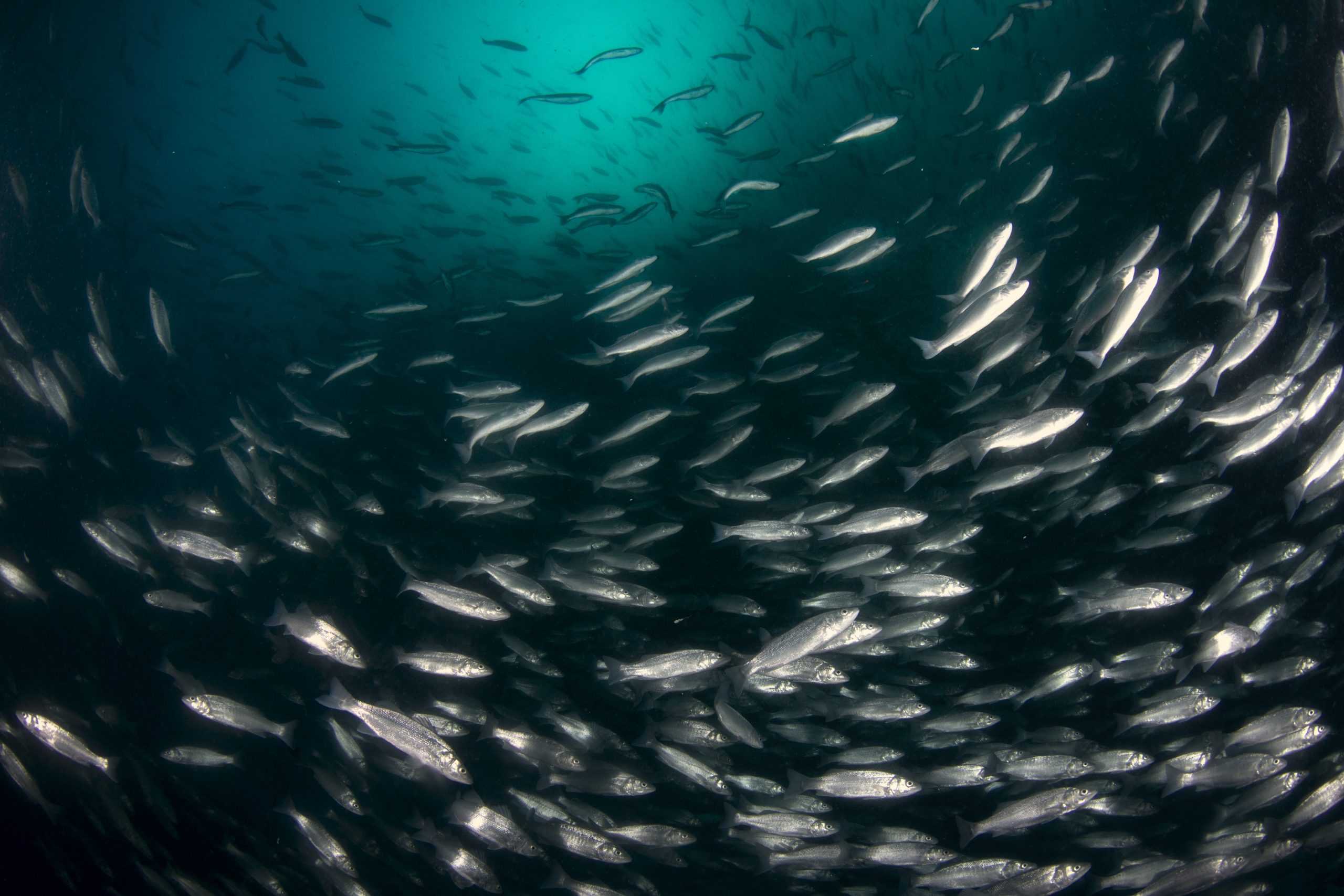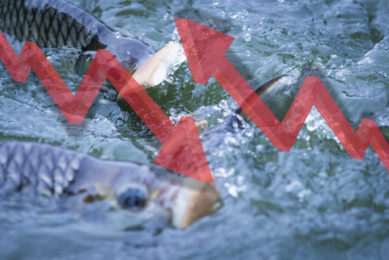Lysolecithins help sea bass grow better

Lysolecithins have proven to be a cost effective solution to improve fat emulsification, fat digestion and nutrient absorption in broilers and piglets. It has also been shown to be very beneficial for sea bass.
Native lecithin is obtained during degumming of crude oil from oilseeds and oil fruits with water and is a complex mixture of phospholipids, some oil, glycolipids and carbohydrates. Lecithins are naturally occurring and are for instance a major component of the lipid bilayer of cell membranes. Native lecithins are applied in animal feed because they are a relatively cheap source of energy and act as emulsifiers for fats. Lysophospholipids (also named lysolecithins) are derived from phospholipids by the action of the enzyme phospholipase A2 (Figure 1).
Figure 1 – The formation of a lysophospholipid (lysolecithin). As an example the formation of lysophosphatidylcholine from phosphatidylcholine is shown.

The obtained lysolecithins have a more hydrophilic character compared to native lecithins, which results in a better oil-in-water emulsification and smaller fat droplets. Lysolecithins promote the formation of small and highly hydrophilic mixed micelles, improving nutrient transport through the unstirred water layer surrounding the intestinal villi. Hydrolysed soy lecithin has good levels of lysophosphatidylcholine (LPC) and lysophosphatidylethanolamine (LPE) which are both important components of the lipid bilayer of cell membranes of the epithelium cells. Dietary LPC and LPE can interfere with the phospholipid bilayer of animal cells, increasing their fluidity and permeability and thus facilitating nutrient and fat absorption. Hence, lysolecithins in the diet will help to obtain better animal performance.
Application of (lyso)lecithins in sea bass
Many fish larvae receive phospholipids in their natural diets, whether from yolk sac lipids prior to first feeding or from natural prey. In the early 1980s it was already shown that when live feeds were replaced by micro diets, dietary phospholipids were essential for normal development and survival. However, due to the growth of the aquaculture industry, the demand for the major aqua feed ingredients; fish meal and fish oil, continues to increase.
Therefore, the industry started to use alternative fat and protein sources, like those originating from plants. Vegetable fat and protein sources have disadvantages, such as higher anti-nutritional factors, high level of carbohydrates and lower nutrient densities. In literature it was mentioned that accumulation of lipid droplets in the GIT of salmonids fed vegetable oils was repaired by the supplementation of phospholipids. This accumulation could be the result of a limited synthesis of phospholipids by the fish itself, and the lack of a well-developed pancreas as found in some teleost species. The pancreas produces phospholipase A2 which promotes the formation of lysophospholipids which are needed for an optimal fat emulsification. This indicates that a dietary emulsifier is needed. Scientific articles state that soybean lecithin in feed improves emulsification and digestibility in the fish intestine. Next to these characteristics, phospholipids are also an important source of energy. Phospholipids tend to be a rich source of essential fatty acids and may be easier to digest than neutral lipids. Hence, products containing phospholipids and lysophospholipids are of interest for both fish meal/oil and vegetable oil based diets for aquatic species.
Importance of phospholipid profile
To study the effect of different (lyso-) phospholipid profiles on performances of sea bass, a trial was performed in Greece. The European sea bass was used for this study and were obtained from a local fish farm. In total 270 fish were used and distributed over 9 cylinder-conical tanks of 0.170m3 in an open flow water system (30 fish/ tank). The trial lasted for 92 days.
3 treatment groups were used which received the same commercial diet (45% protein and 18% fat, of which 11.8% added salmon oil and 2% added fish oil). The control group did not receive any additive.
Treatment group 1 received FRA® LeciMax Dry (trial product) with an inclusion rate of 750 gram/ ton of feed.
Treatment group 2 received a competing product that contains a smaller amount of lysophospholipids and was dosed at 750 gram/ ton of feed.
- Both products were added on top of the basal diet.
- Feeding was performed close to satiation, twice a day (09:00H and 14:00H), 6 days a week.
- Water temperature was set at 25 ± 2 °C and oxygen concentration ranged from 5.4 – 6.7 ppm.
At the end of the trial fish almost quintupled their weight (Table 1). The final weight of the fish in the control group was lower (76.6g) compared to the treatment groups (83.3g and 81.2g for treatment 1 and 2 respectively) in which the sea bass received lysolecithins. Moreover, the addition of lysolecithins resulted in improved feed efficiency (FE) and feed conversion ratio (FCR). Furthermore, these two parameters were only significantly better than the control group when the trial product was given (P=0.007 and P=0.013 respectively).
Conclusions
From this trial it became clear that adding (lyso-) lecithin based products (750 g/ton) to the diet of sea bass containing 38.8% fish based raw materials and 56.2% vegetable based raw materials, resulted in better growth, FE and FCR. Feeding a product with a higher content of lysophospholipids resulted in the best performances.











